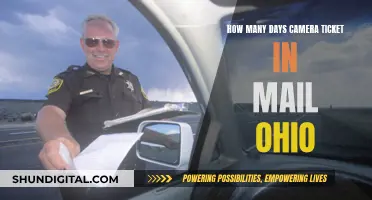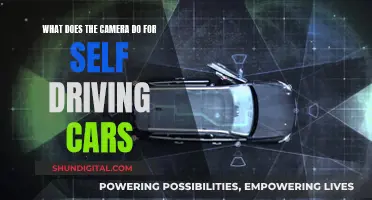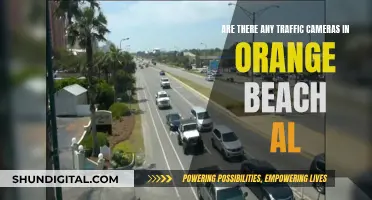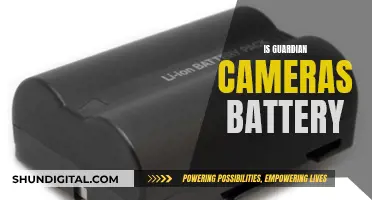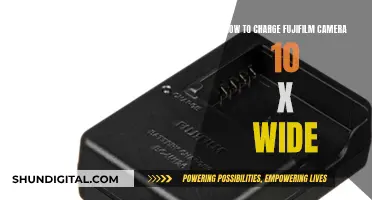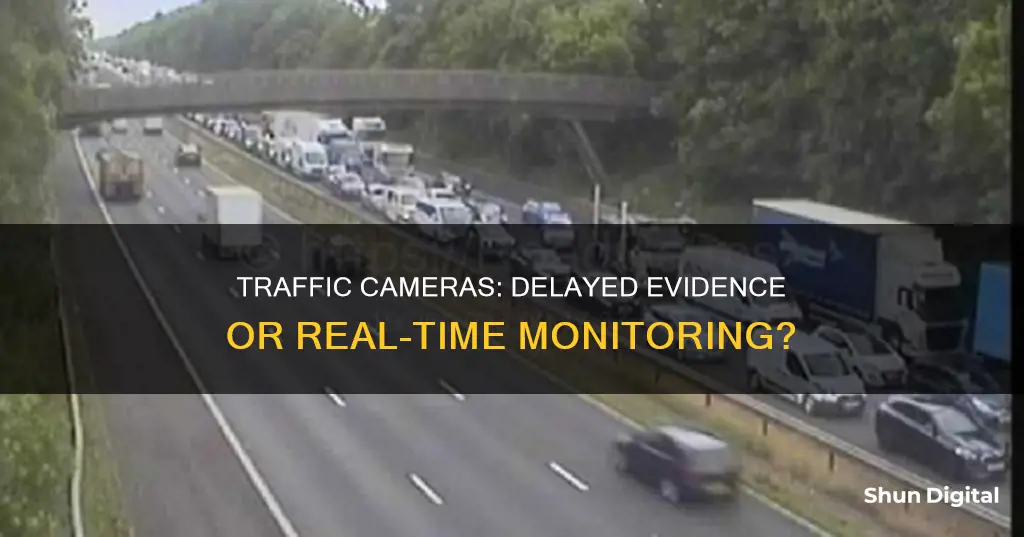
Traffic cameras are an essential tool for monitoring road conditions and enforcing traffic rules. They are typically mounted beside or over roads or installed in enforcement vehicles to detect offences such as speeding, running red lights, or unauthorized use of bus lanes. While these cameras can provide real-time information to aid drivers in making informed travel decisions, one of the key questions surrounding their use is whether there is a delay in their operation. This query arises due to the potential consequences for drivers, as even a slight delay in capturing violations can impact the accuracy of enforcement and affect driver safety. Understanding any delay in traffic cameras is crucial for both effective traffic management and ensuring fairness in penalizing traffic violations.
| Characteristics | Values |
|---|---|
| Purpose | To detect motoring offenses, including speeding, vehicles going through a red traffic light, vehicles going through a toll booth without paying, unauthorized use of a bus lane, or for recording vehicles inside a congestion charge area |
| Installation | Mounted beside or over a road or installed in an enforcement vehicle |
| Functionality | May be linked to an automated ticketing system |
| Effectiveness | A worldwide review of studies found that speed cameras led to a reduction of "11% to 44% for fatal and serious injury crashes" |
| Privacy Concerns | The latest automatic number-plate recognition systems can be used for the detection of average speeds and raise concerns over loss of privacy and the potential for governments to establish mass surveillance |
| Notification | There is no indication, such as a camera flash, to notify drivers that they have been caught |
| Enforcement | The police or a private firm can simply look up the license plate and send the ticket in the mail |
What You'll Learn

Traffic cameras do not always flash
Traffic cameras are an essential tool for monitoring road conditions and enforcing traffic rules. While they are typically associated with flashing lights, it is important to note that traffic cameras do not always flash when capturing images or footage of vehicles. This lack of a flash feature can make it challenging for drivers to determine if they have been caught by a traffic camera, especially when newer camera models with infrared flash are used.
The absence of a flash on traffic cameras can be attributed to several factors. Firstly, not all camera models are designed with a flash function. For example, the Gatsometer camera, commonly found in a yellow box in the UK, is known to always flash when capturing images. In contrast, other camera models, such as the Truevelo-D speed cameras, utilize an infrared flash that is invisible to drivers.
The use of infrared flash or no flash at all can be a deliberate design choice to enhance the stealth of traffic cameras. By avoiding a noticeable flash, these cameras can capture evidence of traffic violations without alerting drivers. This feature is particularly useful in high-risk areas, such as locations with a history of accidents or injuries caused by running red lights.
Additionally, the flash function may be omitted to reduce maintenance requirements and costs. Traditional film-based cameras with flash tend to require more maintenance and have higher operating costs compared to modern digital cameras. Digital cameras, on the other hand, can capture images without flash and offer advantages such as wireless connectivity and remote image transfer, making them more convenient and cost-effective for law enforcement agencies.
It is worth noting that while the flash on a traffic camera may not be visible, other indicators can suggest that a camera is active. For instance, some cameras are housed in distinctive yellow boxes, like the Gatsometer, making them easily identifiable. Additionally, the presence of sensors or ground loops on the road surface can also indicate that a traffic camera is operational, even if it does not produce a visible flash.
Finding Your Dell Computer's Camera: A Quick Guide
You may want to see also

Cameras can be used for multiple purposes
In addition to traffic enforcement, cameras can also be used for various other purposes. For example, automatic number-plate recognition systems can be used to identify untaxed, stolen, or uninsured vehicles. Congestion charge cameras detect vehicles that have not paid the appropriate fee within a certain area. Toll-booth cameras identify vehicles that pass through without paying the toll. Bus lane cameras enforce the exclusive use of bus lanes and can be mounted on buses or by the roadside. Level crossing cameras monitor vehicles crossing railways at grade.
Furthermore, noise pollution cameras, also known as "noise radars," are used to enforce compliance with local or national vehicle noise limits. These cameras are triggered when a vehicle emits a sound above a pre-set decibel limit and can lead to warnings, fines, or prosecution for the registered owner. Another type of camera is the parking camera, which issues citations to vehicles that are parked illegally or have not been moved during posted times.
High-occupancy vehicle lane cameras serve to identify vehicles that violate occupancy requirements, while turn cameras at intersections prohibit specific turns at red lights, usually in heavily populated areas. All these examples demonstrate the versatility of cameras and how they can be utilised for a range of purposes beyond simple image capture.
How Do Disposable Cameras Work Without Batteries?
You may want to see also

Cameras can be mounted on vehicles
Traffic enforcement cameras are an effective way to monitor traffic violations and improve road safety. These cameras can be mounted on vehicles or installed at specific locations like over or beside a road. The use of vehicle-mounted cameras offers several advantages and benefits, which are discussed below:
Flexibility and Mobility
Vehicle-mounted cameras can be easily moved from one location to another, providing flexibility in traffic monitoring. This mobility allows law enforcement to deploy the cameras in areas with high traffic congestion or accident-prone zones, ensuring efficient utilization of resources.
Coverage and Surveillance
Mounting cameras on vehicles extends their reach and provides a wider range of coverage. This is especially beneficial in monitoring large or remote areas where fixed cameras may not be feasible or cost-effective. Vehicle-mounted cameras can also be strategically positioned to capture specific events or situations, such as protests, sports events, or emergency response operations.
Reduces the Risk of Vandalism
Fixed cameras installed at specific locations may be vulnerable to vandalism or tampering. On the other hand, vehicle-mounted cameras are more secure as they can be moved and monitored by authorized personnel, reducing the chances of damage or interference.
Real-time Monitoring and Response
Vehicle-mounted cameras, when combined with wireless communication technologies, can provide real-time video streaming and data transmission. This capability enables law enforcement agencies to monitor traffic conditions, detect violations, and respond promptly to incidents or emergencies.
Multipurpose Functionality
Modern vehicle-mounted cameras often incorporate advanced technologies and sensors, enabling them to serve multiple purposes beyond traffic enforcement. For example, these cameras can be equipped with automatic number-plate recognition systems, speed detection capabilities, or even noise pollution monitoring features.
Cost-effectiveness
By utilizing existing vehicles within their fleet, law enforcement agencies can reduce the cost of purchasing and installing fixed cameras at multiple locations. Vehicle-mounted cameras also offer the advantage of being quickly deployed to different areas, eliminating the need for a large number of fixed cameras.
Easy Setup Guide: Uniden UDSC15 Surveillance Camera
You may want to see also

Cameras can be concealed
Traffic enforcement cameras are an effective way to monitor motoring offences, such as speeding, red-light running, and toll booth avoidance. These cameras are typically mounted beside or over a road or installed in an enforcement vehicle. While they have been proven to reduce accidents and injuries, some people express concerns about their privacy and the potential for governments to conduct mass surveillance.
In addition to fixed camera systems, mobile speed cameras are also used. These may be hand-held, tripod-mounted, or vehicle-mounted. Vehicle-mounted systems can be fixed to the enforcement vehicle, allowing for mobility with or against the flow of traffic. This flexibility enables the capture of vehicle speeds relative to the speed of the enforcement vehicle.
The use of concealed cameras in traffic enforcement is a strategic approach to enhance road safety and deter motoring offences. By placing cameras in discreet locations, such as garbage bins, authorities can effectively monitor and enforce traffic regulations without drivers being aware of the exact camera placement.
The concealment of traffic cameras is just one aspect of the broader strategy to improve road safety and reduce accidents. The placement of these cameras, whether concealed or not, is carefully considered to maximize their impact on reducing speeding, red-light running, and other traffic violations.
Who's Watching? Computer Cameras and Your Privacy
You may want to see also

Cameras can be fixed or mobile
Traffic enforcement cameras are used to monitor and enforce compliance with road rules and regulations. These cameras can be fixed or mobile. Fixed cameras are typically mounted on poles, while mobile cameras are set up by law enforcement and can be moved to different locations.
Fixed cameras are installed at specific high-risk sites, such as tunnels or areas with a history of severe crashes, to deter speeding and reduce accidents. They are strategically placed based on crash rates and travelling speeds. These cameras are accompanied by highly visible warning signs to alert motorists. Fixed cameras use electronic sensors embedded in the road surface to accurately measure vehicle speed, and if the speed limit is exceeded, a digital image of the vehicle, including its type, number plate, location, direction of travel, and speed, is recorded.
On the other hand, mobile speed cameras are effective due to their unpredictable nature, creating a general deterrence against speeding. They work similarly to fixed cameras but are moved from location to location in a vehicle. Mobile cameras can be hand-held, tripod-mounted, or vehicle-mounted, allowing for flexibility in their deployment.
Both fixed and mobile cameras play a crucial role in enforcing road safety, reducing collisions, and saving lives. They are essential tools for law enforcement agencies to monitor and improve road safety, especially in high-risk areas.
Reversing Computer Camera: A Step-by-Step Guide
You may want to see also
Frequently asked questions
A traffic camera is a camera that may be mounted beside or over a road or installed in an enforcement vehicle to detect motoring offenses, including speeding, vehicles going through a red traffic light, vehicles going through a toll booth without paying, unauthorized use of a bus lane, or for recording vehicles inside a congestion charge area.
Traffic cameras work by using sensors or ground loops that are located on the road to detect vehicles that pass through the lights once they’ve turned red.
Yes, there are several types of traffic cameras, including red light cameras, speed cameras, bus lane cameras, and congestion charge cameras.
If you get caught by a traffic camera, you may receive a fine, penalty points on your license, or both. The fine amount and number of points depend on the type and severity of the offense.
Yes, traffic cameras have been shown to reduce accidents and injuries, improve road safety, and help local authorities monitor congestion and traffic. They also serve as a deterrent against traffic violations and help police keep track of repeat offenders.


